White Goods Recycle in Commercial Waste Disposal
Introduction to White Goods Recycling
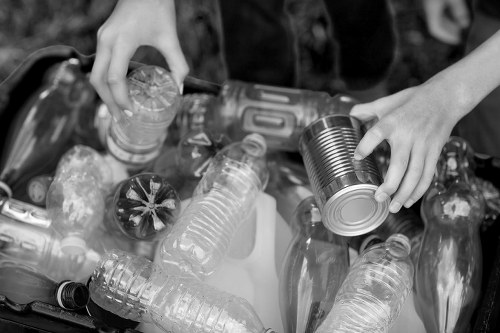
In the realm of commercial waste disposal, the recycling of white goods plays a pivotal role. White goods, which include major household appliances like refrigerators, washing machines, and dishwashers, represent a significant portion of electronic waste. Proper recycling of these items not only contributes to environmental sustainability but also helps businesses comply with regulatory requirements.
As the demand for new appliances continues to grow, so does the volume of discarded white goods. This surge necessitates efficient and responsible recycling practices to mitigate the environmental impact. Commercial waste disposal companies are increasingly focusing on white goods recycling as part of their service offerings, recognizing its importance in the broader waste management ecosystem.
Understanding the complexities of white goods recycling is essential for businesses aiming to enhance their sustainability efforts. From dismantling appliances to recovering valuable materials, the recycling process requires specialized knowledge and equipment. This article delves into the significance, benefits, and best practices associated with white goods recycling in commercial waste disposal.
The Importance of Recycling White Goods
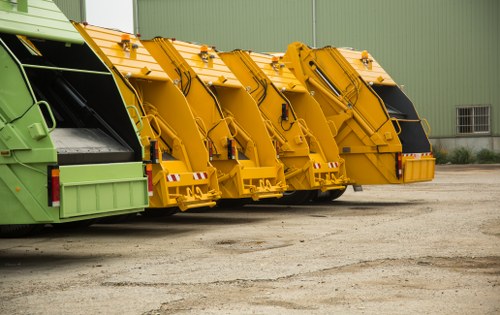
Recycling white goods is crucial for several reasons, both environmental and economic. Firstly, white goods contain various materials that can be reused or repurposed. Metals like steel, aluminum, and copper are commonly found in appliances and can be recycled to create new products, reducing the need for raw material extraction.
Secondly, improper disposal of white goods can lead to environmental hazards. Many appliances contain harmful substances such as refrigerants, mercury, and lead. When these items are not recycled correctly, these substances can leach into the soil and water, causing pollution and posing health risks to humans and wildlife.
Moreover, recycling white goods supports the circular economy by extending the lifecycle of materials. By reusing components from old appliances, businesses can decrease their reliance on virgin resources, thereby conserving energy and reducing greenhouse gas emissions associated with material production.
- Environmental protection by reducing landfill waste
- Conservation of natural resources through material recovery
- Compliance with environmental regulations and standards
- Enhancement of corporate social responsibility (CSR) profiles
The Economic Benefits for Businesses
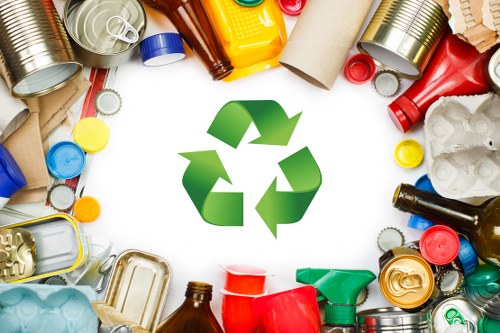
Engaging in the recycling of white goods offers substantial economic advantages for businesses. One notable benefit is cost savings. By recycling appliances, companies can potentially reduce waste disposal fees, as recyclable materials often occupy less landfill space and may be subject to lower tipping fees.
Additionally, businesses can generate revenue through the sale of recovered materials. Metals and other valuable components extracted from white goods can be sold to manufacturers, providing an additional income stream. This not only offsets disposal costs but also contributes to the overall profitability of the business.
Furthermore, participating in white goods recycling can enhance a company's reputation. Demonstrating a commitment to sustainability can attract environmentally conscious customers and partners, fostering loyalty and driving business growth. This positive public image can differentiate a company in a competitive market, leading to increased market share and customer retention.
- Reduction in waste disposal expenses
- Revenue generation from recycled materials
- Improved brand image and market positioning
- Enhanced compliance with industry standards and regulations
The Recycling Process for White Goods
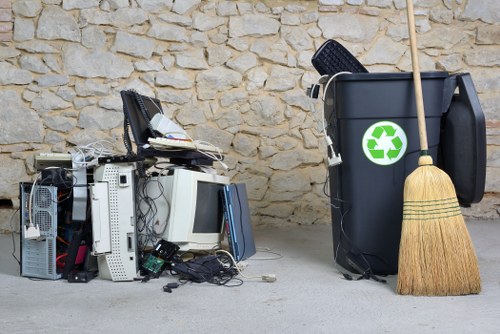
Collection and Transportation
The recycling journey of white goods begins with the collection and transportation of used appliances. Commercial waste disposal companies often provide collection services tailored to handle bulky and heavy items. Efficient transportation logistics are essential to ensure that appliances are moved safely and without causing damage to other goods or the environment.
Sorting and Dismantling
Once collected, appliances undergo a sorting process to categorize them based on type, condition, and recyclability. Dismantling involves carefully disassembling appliances to separate different materials. This step is crucial for ensuring that recyclable components are efficiently extracted and that hazardous substances are managed appropriately.
Material Recovery and Processing
After dismantling, materials such as metals, plastics, and glass are recovered and processed. Metals are often melted and purified to be reused in manufacturing new products. Plastics may be recycled into raw materials for other applications, while glass can be melted down and reformed. This stage maximizes resource recovery and minimizes waste.
- Collection and Transportation
- Sorting and Dismantling
- Material Recovery and Processing
- Final Disposal of Non-Recyclable Components
Legal Requirements and Compliance
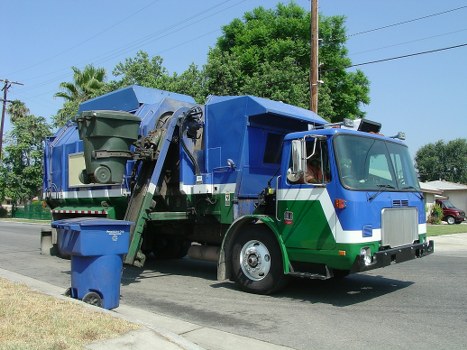
Understanding Regulations
Recycling white goods is governed by a range of local, national, and international regulations aimed at minimizing environmental impact. Businesses must be aware of these laws to ensure compliance and avoid potential fines. Key regulations often address the proper disposal of hazardous substances found in appliances, recycling quotas, and reporting requirements.
Compliance Strategies
To comply with legal requirements, businesses should implement comprehensive recycling policies and partner with certified recycling providers. Regular audits and training programs can help ensure that all employees understand and adhere to recycling protocols. Additionally, keeping abreast of regulatory changes is essential for maintaining compliance and adapting practices as needed.
Benefits of Compliance
Adhering to legal standards not only avoids penalties but also enhances a company's credibility. Compliance demonstrates a commitment to environmental stewardship and responsible business practices, which can be leveraged in marketing and stakeholder communications. Moreover, staying compliant can open up opportunities for incentives, grants, and certifications that further support sustainability initiatives.
- Awareness of local and international recycling laws
- Implementation of robust recycling policies
- Collaboration with certified recycling partners
- Regular training and audits to ensure adherence
Choosing the Right Recycling Partner
Criteria for Selection
Selecting a reliable recycling partner is crucial for the success of white goods recycling initiatives. Businesses should consider factors such as the provider's certification, experience, and capacity to handle large volumes of appliances. It's also important to assess their process transparency, ensuring that materials are recycled responsibly and ethically.
Evaluating Services
A top recycling partner should offer comprehensive services, including collection, transportation, dismantling, and material recovery. Additionally, they should provide detailed reporting and documentation to support compliance and track recycling progress. Value-added services, such as data security for appliances containing sensitive information, can also be beneficial.
Building a Partnership
Establishing a strong relationship with a recycling partner involves clear communication and mutual understanding of goals. Regular meetings and performance reviews can help maintain alignment and address any challenges promptly. A collaborative approach ensures that both parties work together effectively to achieve sustainable recycling outcomes.
- Certification and compliance with industry standards
- Experience and expertise in white goods recycling
- Comprehensive service offerings
- Transparent processes and reporting
Best Practices for Efficient Recycling
Implementing a Recycling Program
Establishing a structured recycling program within a business can streamline the process of managing white goods waste. This involves setting clear goals, assigning responsibilities, and creating standardized procedures for appliance collection and disposal. An effective program ensures consistency, reduces errors, and enhances overall efficiency.
Employee Training and Engagement
Educating employees about the importance of recycling and training them on proper disposal methods is vital for the success of recycling initiatives. Engaged employees are more likely to participate actively and adhere to established protocols, contributing to higher recycling rates and better environmental outcomes.
Monitoring and Continuous Improvement
Regularly monitoring recycling activities and assessing performance helps identify areas for improvement. Businesses should track key metrics such as recycling rates, waste diversion percentages, and cost savings. Utilizing this data allows for informed decision-making and the implementation of strategies to enhance efficiency and effectiveness.
- Setting clear recycling objectives and goals
- Standardizing collection and disposal procedures
- Conducting regular training sessions
- Tracking performance metrics and adjusting strategies
Environmental Impact of Recycling White Goods
Reduction in Landfill Use
Recycling white goods significantly reduces the amount of waste sent to landfills. By diverting bulky appliances from disposal sites, businesses help conserve landfill space and decrease the environmental footprint associated with waste management. This reduction is crucial as landfills contribute to soil and water pollution and generate greenhouse gases.
Energy Conservation
Recycling materials from white goods consumes less energy compared to producing new materials from scratch. For instance, recycling aluminum saves up to 95% of the energy required to produce it from raw bauxite ore. Similarly, recycled steel uses significantly less energy, highlighting the energy-efficient nature of the recycling process.
Carbon Footprint Reduction
By minimizing the need for raw material extraction and processing, recycling white goods contributes to lowering greenhouse gas emissions. The reduction in energy consumption directly correlates with a decrease in carbon dioxide and other harmful emissions, aiding in the fight against climate change.
- Significant reduction in landfill waste
- Conservation of energy through material reuse
- Lower greenhouse gas emissions
- Promotion of sustainable resource management
Technological Advancements in Recycling
Automation and Machinery
Advancements in recycling technology have enhanced the efficiency and accuracy of white goods recycling processes. Automated machinery can dismantle appliances more quickly and safely than manual methods, increasing throughput and reducing labor costs. These technologies also improve material separation, ensuring higher quality recyclables.
Innovative Recycling Methods
Innovative methods, such as advanced shredding and sorting systems, allow for more effective recovery of materials from complex appliances. Techniques like magnetic separation, eddy current separation, and optical sorting enhance the purity of recovered materials, making them more suitable for reuse in manufacturing.
Digital Tracking and Management
Digital tools and software solutions facilitate better tracking and management of recycling operations. These technologies enable businesses to monitor the flow of materials, track compliance with regulations, and generate detailed reports. Enhanced data management supports informed decision-making and continuous improvement in recycling practices.
- Increased efficiency through automated dismantling
- Enhanced material separation with advanced sorting technologies
- Improved tracking and reporting with digital tools
- Higher quality recyclables through innovative methods
Challenges in White Goods Recycling
Complexity of Appliances
White goods are often composed of various materials and complex components, making the recycling process challenging. Separating different materials without causing contamination requires specialized equipment and trained personnel. This complexity can increase the time and cost associated with recycling efforts.
Regulatory Hurdles
Navigating the myriad of regulations governing white goods recycling can be daunting for businesses. Compliance requirements vary by region and may involve strict guidelines on handling hazardous substances, reporting, and certification. Keeping up with these regulations necessitates dedicated resources and expertise.
Market Fluctuations
The market demand for recycled materials can fluctuate, impacting the economic viability of recycling operations. Price volatility in raw materials markets can affect the profitability of recycling initiatives, making it essential for businesses to adopt flexible and resilient recycling strategies.
- Difficulty in separating mixed materials
- High initial investment in specialized equipment
- Constantly changing regulatory landscapes
- Unpredictable market demand for recyclables
Future Trends in White Goods Recycling
Increased Automation
The future of white goods recycling is poised to embrace greater automation. Robotics and artificial intelligence are expected to play a significant role in streamlining dismantling processes, improving accuracy, and reducing labor costs. Enhanced automation will lead to higher efficiency and scalability in recycling operations.
Circular Economy Integration
There is a growing trend towards integrating white goods recycling into the circular economy framework. This approach emphasizes the continuous reuse and regeneration of materials, moving away from the traditional linear model of production and disposal. Businesses are increasingly adopting circular practices to enhance sustainability and resource efficiency.
Sustainable Design
Manufacturers are beginning to design white goods with recycling in mind. Sustainable design principles focus on ease of disassembly, use of recyclable materials, and minimization of hazardous substances. Such design innovations facilitate more efficient recycling processes and reduce the environmental impact of appliances throughout their lifecycle.
- Adoption of advanced automation and AI technologies
- Integration of recycling into circular economy models
- Emphasis on sustainable and recyclable product design
- Development of eco-friendly recycling methods
Case Studies: Successful White Goods Recycling
Company A: Innovative Recycling Techniques
Company A has pioneered the use of cutting-edge recycling technologies to efficiently manage white goods waste. By implementing automated dismantling lines and advanced sorting systems, they have significantly increased their material recovery rates. Their commitment to innovation has positioned them as leaders in the recycling industry.
Company B: Circular Economy Practices
Company B has fully embraced circular economy principles by designing appliances that are easy to disassemble and recycle. Their closed-loop recycling system ensures that materials from old appliances are continuously reused in new products, minimizing waste and conserving resources.
Company C: Comprehensive Recycling Program
Company C has developed a comprehensive recycling program that includes employee training, robust collection protocols, and partnerships with certified recycling providers. Their holistic approach has resulted in high recycling rates and substantial cost savings, demonstrating the effectiveness of integrated recycling strategies.
- Implementation of advanced recycling technologies
- Adoption of circular economy frameworks
- Development of comprehensive recycling programs
- Successful partnerships with industry leaders
Conclusion
Recycling white goods in commercial waste disposal is a critical component of modern sustainability efforts. It offers numerous environmental and economic benefits, from reducing landfill waste and conserving resources to generating revenue and enhancing corporate reputation. By understanding the recycling process, complying with regulations, and adopting best practices, businesses can effectively manage their white goods waste and contribute to a more sustainable future.
As technology advances and the circular economy gains traction, the landscape of white goods recycling will continue to evolve. Businesses that proactively engage in recycling initiatives will not only comply with regulatory requirements but also position themselves as leaders in sustainability, driving positive change in their industries and communities.
Embracing white goods recycling is not just an environmental imperative but a strategic business decision that can yield long-term benefits. By prioritizing responsible waste management, companies can foster a culture of sustainability, ensuring that their operations contribute positively to the planet and society.